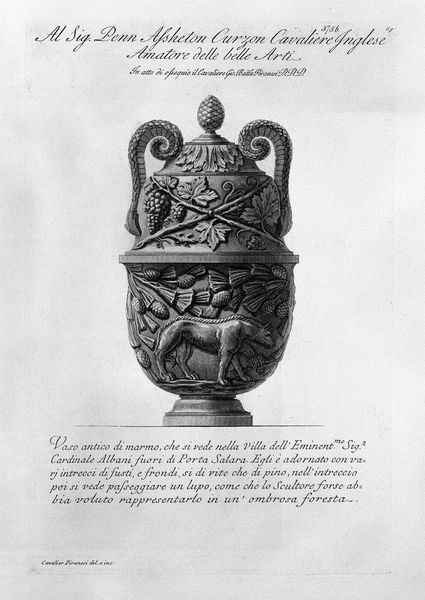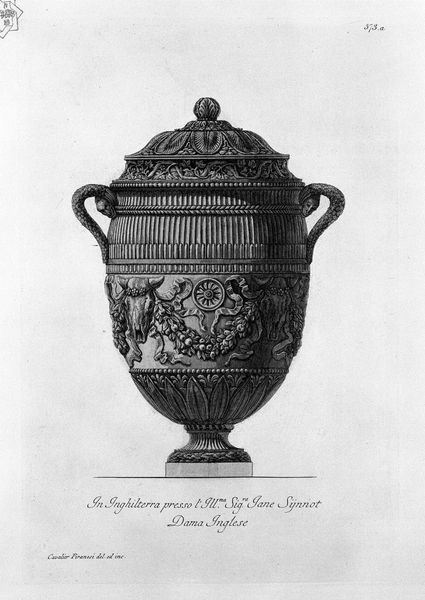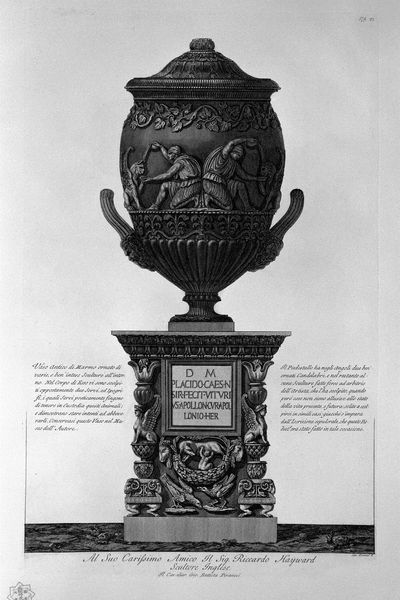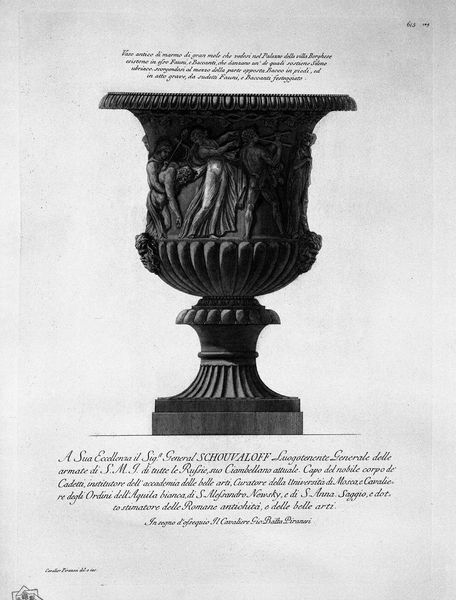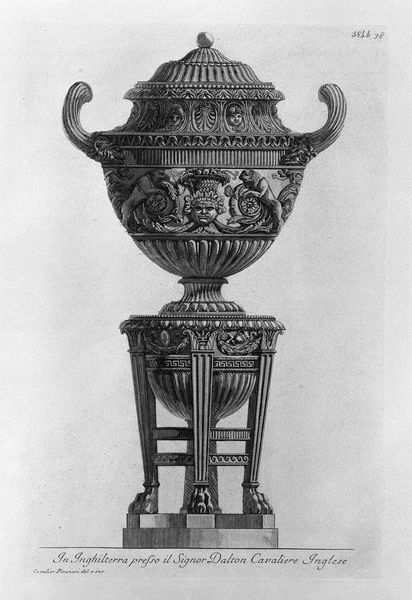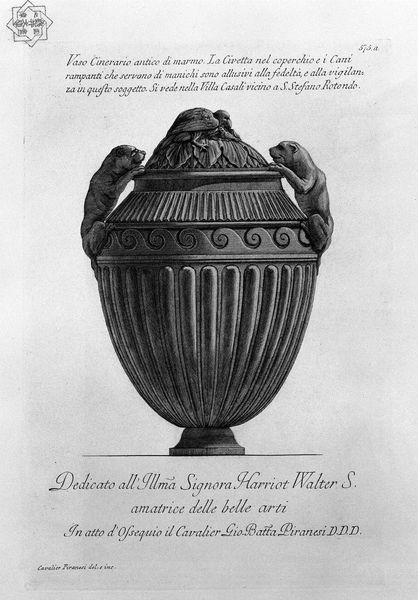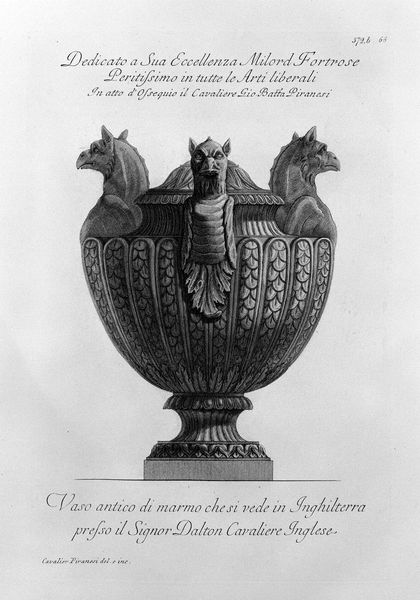
Ancient marble vase decorated with twisted stems of ivy, birds and scenic masks scherzanti 1770
0:00
0:00
print, etching, engraving
#
neoclacissism
# print
#
etching
#
history-painting
#
engraving
Copyright: Public domain
Editor: This is "Ancient marble vase decorated with twisted stems of ivy, birds and scenic masks scherzanti" by Giovanni Battista Piranesi, created around 1770. It's a print – an etching and engraving. The detail is amazing. What strikes me most is the balance between the flowing organic elements and the very rigid structure of the vase itself. What do you see in this piece? Curator: Focusing on the visual, note the interplay between light and shadow achieved through precise lines. The texture is artificially constructed. How do these stark contrasts enhance the overall form of the vase, giving it a monumental quality? Observe the density of ornamentation towards the upper portion of the vase versus the relative simplicity of the base. Consider this compositional choice. Editor: It does feel top-heavy, now that you mention it. Is that intentional, maybe to draw your eye upwards? Curator: Precisely. Notice how the repetition of forms – the leaves, the masks, even the individual lines of the engraving – create rhythm and visual interest. Yet, paradoxically, this complexity leads to a unified, cohesive whole. This, you see, underscores a mastery of technique. Is it not captivating how lines create forms and give life to this etching? Editor: Definitely. I hadn’t considered the relationship between the technique and the sense of visual balance, or lack thereof. I will look at it differently now! Curator: Yes, sometimes form itself contains meaning.
Comments
No comments
Be the first to comment and join the conversation on the ultimate creative platform.
